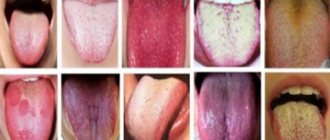18.12.2020 Sputum
- mucus produced by the trachea and bronchi, mixed with secretions from the nasal mucosa and saliva. What is it for? With it, dust and microbes are removed from the body, which inevitably get inside with our breath. This substance in itself is not a sign of disease: a healthy body generates approximately 100 ml of clear sputum every day - it is quietly swallowed and dissolved by gastric juice.
Another thing is a pathological process in which up to 1.5 liters of viscous mucus per day can be produced. In this case, it is coughed up and may look completely different. The color of sputum when coughing indicates the specifics of the disease and its severity.
Causes of green sputum
Pneumonia
Expectoration of green sputum is a typical sign of segmental or lobar pneumonia.
Purulent discharge with an unpleasant odor appears on days 2-4 of the disease. The patient begins a painful coughing attack, after which a moderate amount of sputum is released. Pneumonia is not characterized by the discharge of pus “a mouth full”, as with destructive lung damage. Coughing up sputum continues for 1-2 weeks. Gradually, the amount of green mucus decreases, the discharge becomes white-yellow and cloudy. In addition to this symptom, a person is bothered by a dull soreness in the chest, which gets worse when coughing. There is a febrile temperature, general malaise, and increased breathing. Patients avoid taking deep breaths to avoid exacerbating chest pain.
Chronical bronchitis
Green, thick sputum is mainly produced in people who have been ill for 4-5 years or longer. Deformations form in the bronchi, which contribute to the stagnation of mucous secretion and the proliferation of pathogenic microflora in it. For chronic bronchitis, coughing up green mucus in the morning after sleep is typical. A person experiences a painful coughing attack, which ends with the release of sputum. During the day the symptom rarely bothers you.
During an exacerbation of bronchitis, the volume of green sputum increases to 200-300 ml per day. Patients complain of increased shortness of breath, weakness and malaise. Body temperature is increased. The cough becomes constant and is accompanied by coughing up thick yellow-green or gray-green mucus that has an unpleasant odor. The exacerbation lasts 2-3 weeks, after which the amount of green sputum decreases.
Bronchiectasis
With this disease, stagnation of secretion occurs in the dilated and deformed bronchi, due to which it becomes infected with pathogenic bacteria. During exacerbations of the disease and cough paroxysms, a large volume of green secretion with a foul odor is released. Increased discharge of mucus occurs after being in a lying position with the head down or after breathing exercises.
For the period of remission, scant mucopurulent sputum of a green hue is typical, which is released in separate spits during a cough attack. Those suffering from bronchiectasis experience chronic hypoxia, so patients complain of increased fatigue, dizziness, and deformation of the terminal phalanges of the fingers. If the pathology occurs in children, a delay in physical development is usually detected.
Green phlegm
Chronic sinusitis
A thick green secretion forms in the paranasal sinuses, which often flows down the back of the throat, causing a cough reflex. A paroxysmal cough is more often observed in the morning, immediately after waking up, since a large amount of secretions manages to accumulate during the night. A person is bothered by pain and heaviness on the affected side of the face, headaches that get worse when bending the body forward.
Tuberculosis
A greenish tint to the mucus is characteristic of an exacerbation of the disease and massive damage to the lung tissue or the addition of a secondary infection. With tuberculosis, the symptom appears against the background of increased body temperature, intense chest pain, and night sweats. Patients are bothered by paroxysmal coughing paroxysms, accompanied by the release of scanty green sputum, which has an unpleasant odor.
Cystic fibrosis
Symptoms of the disease appear in childhood. A viscous secretion forms in large quantities in the bronchi, which is difficult to cough up. The patient produces sputum after a prolonged painful cough. The airways are cleared much better after being in the drainage position. The discharge is thick and viscous, has a green or gray-green tint, and may contain individual mucous lumps.
Often the pathology is complicated by bronchitis or pneumonia, the sputum becomes more liquid and acquires a yellow-green color. In addition to a wet cough, patients are worried about shortness of breath, weakness, and frequent inflammation of the upper respiratory tract (sinusitis, tonsillitis) with a specific clinical picture. With the mixed form of cystic fibrosis, digestive disorders are associated.
Mycoses of the lungs
Fungal pneumonia is characterized by mucopurulent green sputum, expectorated in small quantities. With aspergillosis, the discharge looks like dense, dirty green lumps mixed with mucus; with zygomycosis, the symptom is supplemented by hemoptysis or pulmonary hemorrhage. Fungal infections occur with severe intoxication. The extremely serious condition of patients is typical for the mixed form of pneumomycosis and concomitant immunodeficiency.
Malignant neoplasms
With bronchopulmonary cancer, the symptom occurs during the period of tumor disintegration. The sputum is copious, dirty green or grayish, and has a strong, foul odor. Often you can see brown particles of pulmonary parenchyma or blood streaks in it. A similar clinical picture is observed in cancer of the lungs or small bronchi. Tumor growth involving the pleura is characterized by severe pain in the affected part of the chest.
Causes of sputum
Mucus in the throat
- a natural reaction of our body to the appearance of an irritant. In this way, the body protects itself from infection: sputum increases in volume, and a person involuntarily coughs to free himself from viruses and harmful bacteria. After recovery, the amount of mucus returns to its normal, imperceptible level. If the feeling of phlegm in the throat has become constant, this may indicate a chronic ENT disease, or problems in the digestive and other systems of the body.
The causes of excess mucus can be different:
- cold;
- bronchitis;
- bronchial asthma;
- pneumonia (pneumonia);
- tuberculosis;
- sinusitis;
- chronic rhinitis;
- lung cancer.
In addition to the listed pathologies, smoking can also be a cause of sputum separation. In smokers, the mucous membrane of the respiratory tract is constantly exposed to the toxic effects of nicotine and cigarette tar. Chronic inflammation gradually provokes the production of sputum in quantities that force a person to cough every morning.
Diagnostics
A qualified pulmonologist should identify the etiological factors that lead to the release of green sputum. During the examination, attention is paid to the symmetry of the participation of the chest in the act of breathing, signs of pulmonary insufficiency, and characteristic respiratory sounds are listened to. Informative diagnosis of diseases is impossible without laboratory and instrumental methods:
- X-ray examination.
X-ray of the chest in frontal and lateral projection shows areas of inflammatory infiltration of the lung tissue, areas of compaction, and contours of neoplasms. CT scan of the lungs helps to visualize the structure of the organ in detail. Bronchography is used to identify signs of bronchial deformation. - FVD study.
For the diagnosis of chronic bronchopulmonary diseases, spirometry is indicated, the results of which determine the vital capacity of the lungs, the volume of forced expiration and the degree of reversibility of changes. To quickly assess respiratory function, the peak flowmetry method is used. - Bronchoscopy.
Visualization of the bronchial tree by the endoscopic method is necessary when there are difficulties in differential diagnosis or when a malignant process is suspected. The method shows the condition of the bronchial mucosa, allows you to detect deformations and neoplasia. If necessary, a biopsy is taken using a bronchoscope. - Sputum analysis.
Microscopic examination of the biomaterial evaluates the content of blood cells, the presence of bacteria or fungal spores. Staining for acid-fast bacteria is required to exclude tuberculosis. Next, a bacteriological analysis of the discharge is performed.
Additionally, a clinical and biochemical blood test is required, which reveals signs of an inflammatory process. To clarify the diagnosis, an MRI of the lungs is performed. To examine the surface of the lung tissue, diagnostic thoracoscopy is recommended. If green sputum is caused by an infection of the nasal cavity, an otolaryngologist is consulted with rhinoscopy and x-ray of the paranasal sinuses.
Inhalation therapy
Our specialists
Chikina Svetlana Yurievna
Candidate of Medical Sciences, pulmonologist of the highest category. Official doctor, expert at Russian congresses on pulmonology.
30 years of experience
Kuleshov Andrey Vladimirovich
Chief physician, candidate of medical sciences, pulmonologist, somnologist, member of the European Respiratory Society (ERS).
Experience 26 years
Samoilenko Viktor Alexandrovich
Candidate of Medical Sciences, pulmonologist of the highest category. Nominee of the National Award “Best Doctors of Russia” “Calling”.
30 years of experience
Meshcheryakova Natalya Nikolaevna
Candidate of Medical Sciences, pulmonologist of the highest category, associate professor of the Department of Pulmonology named after. N.I. Pirogov.
Experience 26 years
Treatment
Help before diagnosis
When purulent green sputum appears, it is very important to ensure that the respiratory tract is cleared of accumulated secretions. Patients are recommended to be in a postural drainage position several times a day and do breathing exercises. You should not take antitussive drugs that aggravate the course of the disease. Green sputum occurs with serious infectious or chronic processes, so self-medication is unacceptable.
Conservative therapy
Mild forms of chronic pathology are treated on an outpatient basis. Diseases that cause green sputum often dramatically worsen the patient's condition, requiring hospitalization. If signs of respiratory failure occur, oxygen support is provided. Etiopathogenetic therapy includes the following groups of drugs:
- Antibiotics
. Prescribed to destroy pathogenic microorganisms that cause the formation of purulent green sputum. Antimicrobial agents are selected taking into account the results of bacterial culture. For the treatment of tuberculosis, special antibiotics are used in combinations of 3-4 items. - Mucolytics
. They dilute sputum, due to which it is easily removed when coughing and does not stagnate in the bronchial tree. To enhance the effect, secretomotor agents are added that stimulate mucociliary clearance. - Bronchodilators
. Effective for chronic diseases accompanied by difficulty breathing. The drugs expand the lumen of the bronchi, so it becomes easier for a person to breathe, and phlegm is released freely during a coughing attack.
If standard measures are ineffective, they resort to bronchoalveolar lavage and aspiration of purulent secretions. When performing therapeutic bronchoscopy, intrabronchial administration of antibacterial drugs is possible. Among the physiotherapeutic methods, vibration chest massage, medicinal electrophoresis, and inhalations are actively recommended.











